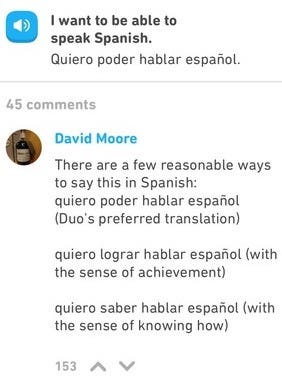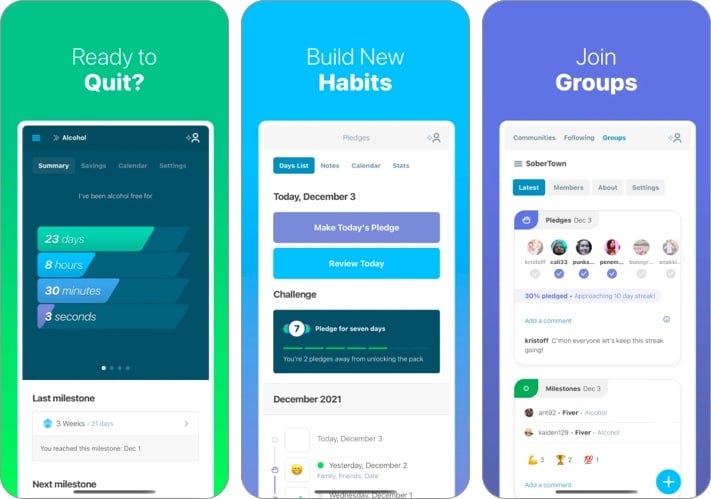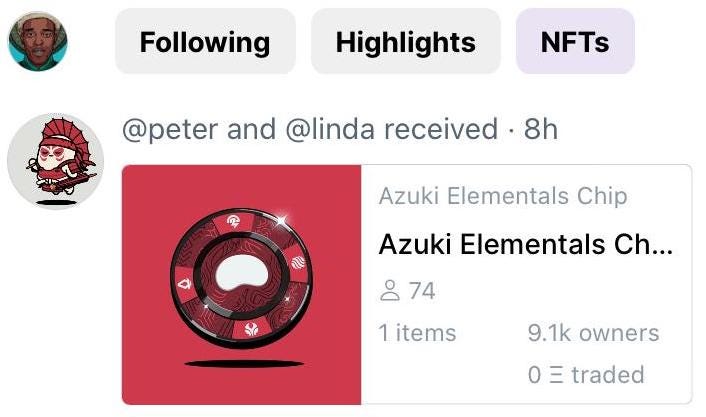Orthogonizing Social Media
Reimagining Digital Social Applications

Thinking orthogonally opens up exciting possibilities to construct productive alternatives to the status quo that incremental thinking might miss.
Consider digital social experiences.
We are spending more time on them. Alongside the entertainment value and connection that the social media has delivered, the paradoxical reality is that these spaces have negative ramifications e.g. increased loneliness and isolation. The intrinsic set of incentives and motivations, borne of an ad centric approach that leverages customer data, has led to distortions like the spread of misinformation, polarisation, and body image issues.
Whilst the levels of capitalisation achieved by mature incumbents pursuing this strategy and approach perpetuates these outcomes, it also traps them — as we are seeing with the advent of AI, and its impact on the online search vertical. The threat of cannibalisation of a core (ad driven) profit centre enjoyed by Google prevented them championing this paradigm shift having been leaders in the space.
Search is undergoing a seismic shift as user experience and monetization patterns are poised for an abrupt change. This may render certain parts of the existing search stack layers obsolete. Simone De Palma
Now the landscape has changed, with the advent of platforms like OpenAI, causing the whole industry to reimagine how users will seek information going forward. From a first principles perspective the same opportunity exists in social media for orthogonal thinkers to reconstitute the purpose, function, and intention behind social applications.
To this end, as a thought experiment, I developed an orthogonizer application on Gradio (bring your own OpenAI API keys) hosted by hugging face.
Social Stories
Protocols and frameworks where users contribute threads of ideas, stories, and experiences, interweaving them into a vibrant tapestry of collective knowledge and inspiration. Users explore this ever-evolving tapestry, connecting with others and gaining insights from different perspectives.
Example
The Aboriginal Dreamtime stories of Australia, where narratives are shared and passed down through generations, creating a tapestry of cultural wisdom. Podcasts are an early iteration here. There is a layer of abstraction to come where one is able to weave together audio from multiple sources around useful themes, narratives, and people.
Implementation
A version of this exists in the comments section of many online ecosystems, with the upvotes signifying collective agreement around the most resonant commentary.

Steemit, a blockchain native social media platform on the Steem blockchain, awards SMT’s (smart media token) to users seeking to incentivize content engagement and community moderation.
A novel technology, rewarding old behaviours. Consider an orthogonal implementation in instances where verification of truth, amongst different individuals’ accounts, was required.
The book Into Thin Air is about the 1998 Everest disaster where the version of events that Jon Krakauer, an American journalist survivor, shares is contested by Anatoli Boukreev with an eventual rebuttal. The problem here is that the audience has to rely on third person accounts, with information asymmetry and a level of opaqueness as to the perspectives of key actors involved that would corroborate or refute these takes. One point of contention is Anatoli’s role in the rescue efforts. Krakauer’s account minimises Boukreev’s role in the rescue efforts, while Boukreev’s book highlights his actions in rescuing several stranded climbers during the deadly blizzard. It seems a verifiable, transparent, public ledger position from those who were saved could resolve this easily. These responses could be anonymised using zero knowledge proofs if necessary.

Rather than likes and comments, engagement and curation, this feature implementation would be something akin to validating or invalidating story accounts for veracity. With value accruing to trusted validators. A track record of social accountability, with verifiable identities that have sufficient context to weigh in (privacy enabled if needed via zk proofs). Companies like provenance do this for the supply chain, leveraging the blockchain to assert credibility and transparency to third person agents as well as accreditations.
Identity based decentralized infrastructures such as Accumulate (previously Factom), Avast, and Worldcoin are laying the groundwork for such tamper-resistant digital records. Such platforms allow multiple parties to contribute and validate information, ensuring the integrity and accuracy of the recorded events or data. How this could affect the social and media landscape is an open question.
Social Sanctuaries
Protocols and frameworks where users seek and share wisdom, insights, and guidance. A place for reflection, deep discussions, and the cultivation of knowledge. Spaces that foster support and nurturing towards specific goals, habits, routines, and outcomes.
Example
The Bodhi Tree in Bodh Gaya, India, where Gautama Buddha attained enlightenment, attracting seekers and philosophers from all over the world seeking spiritual wisdom and enlightenment. We see apps like Calm and Headspace cultivating this affect. Sobriety recovery apps, as well as fitness oriented ones like strava, and stepn all act in service to bring community together in pursuit of betterment and physical or mental nourishment.

Implementation
The Proof-of-Attendance Protocol, or POAP, is a novel way to verify attendance or participation in specific events or activities in the digital world. In the context of habit-building or personal milestones, POAPs can serve as a powerful tool. For instance, in a fitness-oriented community, users could receive digital badges or tokens when they hit a running milestones, attend a specific number of exercise classes, or maintain a streak in their workout routine. Similarly, in a sobriety support group, members could be rewarded with tokens for attending meetings or achieving sobriety milestones.
These tokens could be both a form of social recognition and a source of intrinsic motivation, rewarding users for their personal growth and encouraging them to keep progressing. By celebrating achievements and fostering a sense of community around shared goals, platforms can provide a more nurturing, supportive digital social experience. Consider the pride of wearing a 30 day sober pendant, or marathon medal.
Inverting The Attention Economy
By embracing these orthogonal concepts, we might shift the paradigm from an attention economy, driven by clicks and shares, to a value-based one focused on quality, authenticity, and personal growth. These features represent an opportunity to enhance the utility and impact of our digital social spaces, paving the way for a more meaningful, rewarding, and inclusive online social experience.
One realm vestiges of this idea are already playing out is on Farcaster, where mints of a specific NFT by an arbitrary number individuals in the network are highlighted by the algorithm on the main feed. This induces some level of interest, and support for the creators. Moreover there is a separate feed for NFT’s exclusively.

Integrating cultural practices into our digital experiences can elevate inclusivity, bridge cultural divides, plus ultimately transform the gestalt, architecture, and philosophy that underpins the digital social realm. Specially given how tangental they are to the typical social application interface. We have seen the success of this approach with Tik Tok.
TikTok, developed by the Chinese tech giant ByteDance, embeds elements of Chinese culture within its platform’s architecture through the principles that govern its content curation and user engagement. The app’s algorithm, shaped by the Chinese cultural emphasis on communal interaction and collective participation, encourages active engagement from users, not just passive consumption. This is evident in its ‘For You’ page, which uses an AI-driven curation system to encourage serendipitous discovery of content, a concept reminiscent of Chinese social dynamics where communal bonds are formed through shared experiences and activities. Furthermore, TikTok’s architecture supports rapid content creation and sharing, echoing the Chinese digital culture’s high tempo, which values real-time interactions and quick information exchange. These elements subtly instill aspects of Chinese culture into the user experience.
We can infuse our digital social spaces with globally orthogonal concepts such as “Ibasho,” “Ubuntu,” and “Taoism”. These paradigms not only prioritise a sense of belonging and community but also mindful interactions, encouraging collective responsibility and well-being.
Japanese ‘Ibasho’ — a sense of belonging, finding one’s place in community.
African storytelling traditions are rooted in the Ubuntu community equality philosophy.
The Greek agora brought disparate ideas and voices together to cultivate society.
Taoist principles of balance and harmony cultivate a sense of presence, authenticity, and purpose.
Maori culture focuses on building strong kinship ties through reciprocal relationships and community wellbeing.
Inertia
Much of the new age of social applications, for instance those being built on the blockchain, have a tightrope to walk. On the one hand there is an imperative to offer frictionless digital social experiences individuals can easily learn to use and understand (i.e. not too dissimilar to the past as to be alien). Simultanously to differentiate themselves and capture the collective imagination it behooves such entities to explore new thinking that embraces alternative interpretations of the purpose, function and intention behind these spaces.
Orthogonizing as an exercise offers a lens with which to cultivate unique features, tools, and customisations. The taoist mindful interactions implementation → quadratic posting (inspired by quadratic voting) wherein a user not only shares a view but also indicates how strongly they feel about it. We see a rudimentary version of this playing out on farcaster with “hot takes” and “loosely” and “strongly” held views, etc.

We have seen platforms spring up from such behaviours before.
Howard Lindzon observed the an active vibrant financial community on twitter and built a home for those users on Stocktwits. Elon musk has openly been inspired to turn twitter into a version of WeChat, renaming it as X corp — in homage to X.com which he merged with paypal in 2002. And whilst financialisation is certainly a trend that overlaps well with a crypto native blockchain based social media future, alternative orthogonal white spaces offer fertile defensible ground to plant some digital social seeds.
This article was inspired by reading a take on blockchain based social apps and thereafter exploring the premise of disentangling the inextricability of “Social” and “Media”. The idea being to disambiguate both archetypes from each other to explore new social application compositions. This position was revised to its current state, although interactions users are having with AI are in many instances solely text based and that has not hindered its adoption. Upon reading of the fall of mastodon, after a large scale twitter migration not long ago, it is also important to recognised that decentralization is not a selling point for the vast majority of people. Most users prioritize convenience and functionality over ideological considerations related to software freedom. Poor user experience, particularly for new users, hinders adoption.
Written with help from ChatGPT.
Farcaster @papa — https://www.discove.xyz/@papa
Lens @papajams — https://lenster.xyz/u/papajams

